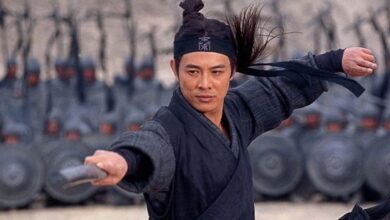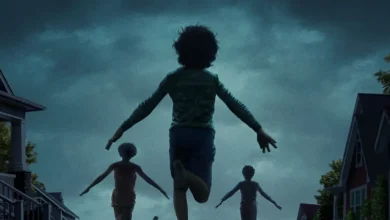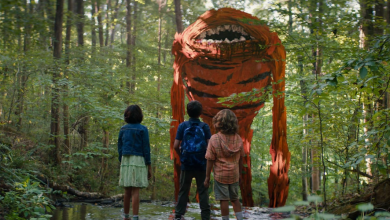Understanding Breaking the Third Wall in Filmmaking

In filmmaking, breaking the third wall is an intriguing technique that allows characters to acknowledge their medium without direct audience interaction. This article delves into the nuances of this approach and its distinction from breaking the fourth wall.
Breaking the Third Wall in Filmmaking
Most filmmakers are familiar with breaking the fourth wall, where characters look directly into the camera to address the audience. However, another technique allows you to make the camera an active participant in your storytelling without direct audience engagement.
This article explores breaking the third wall in filmmaking, a technique where characters acknowledge the medium itself rather than the viewers watching it.
While this term isn’t universally standardized in film studies and is relatively new to cinematic vocabulary, it describes a specific approach to meta-filmmaking that differs from traditional fourth wall breaks.
Unlike the well-established concept of breaking the fourth wall—where characters directly address or acknowledge the audience—breaking the third wall refers to characters acknowledging the medium or fictional nature of their world without directly engaging viewers.
What Is Breaking the Third Wall?
Breaking the third wall is when a character addresses the medium in which they are situated. It differs from breaking the fourth wall, in which characters acknowledge and/or speak directly to the audience.
Breaking the third wall is limited to acknowledging the presence of the camera in the narrative by the actor, and does not involve direct interaction between the audience and them, unlike the technique of breaking the fourth wall.
Ways to Break the Third Wall
In any narrative, here are a few common ways to break the third wall:
1. Direct Address to the Medium
Your character(s) might mention that they’re in a show, taking the form of ironic or literal dialogue.
2. Interaction With the Camera
With this technique, the character mustn’t directly interact with the audience. They might look at or talk to the camera, treating it as a co-character without engaging the viewers.
3. Self-Aware Dialogue
Use this technique to induce humor in your narrative. Characters might joke about tropes, clichés, or even the structure of their own story.
4. Metafictional Moments
Your narrative could draw attention to its artificiality by having a character comment on the flow or treatment of a scene.
Breaking the Third Wall vs Breaking the Fourth Wall
Here are the main points of difference between the two cinematic techniques:
Breaking the Third Wall
Breaking the Fourth Wall
Characters acknowledge their fictional existence and the medium they inhabit (film, TV show, etc.)
Characters directly address or interact with the audience
See More ...
Creates meta-awareness without audience engagement
Creates direct communication between character and viewer
Example: “This isn’t some movie where everything works out”
Example: The character looks at the camera and says “Can you believe this guy?”
Adds humor or commentary while maintaining narrative flow
Engages audience directly, often for commentary or humor
Character treats camera/medium as part of their world
Character acknowledges the audience exists beyond their world
Films and TV Series That Have Broken the Third Wall
The Office (U.S.)
I cannot count the number of times I have binge-watched The Office. Based on the British TV series by the same name, The Office follows the employees of the Dunder Mifflin Paper Company over nine years. The show employs both third- and fourth-wall techniques within its mockumentary format.
While characters speak directly to cameras during talking head interviews, they’re actually addressing the in-universe documentary crew, not the audience, meaning no walls are truly broken. However, characters like Jim Halpert (John Krasinski) and Michael Scott (Steve Carell) often break the third wall by acknowledging they’re being filmed without directly engaging the audience.
Duck Amuck (1953)
This Looney Tunes short film features Daffy Duck battling an unseen animator who’s manipulating his environment. Daffy’s awareness that he is an animated character and his negotiating with the animator is an excellent demonstration of breaking the third wall.
Deadpool
While the beloved superhero is famous for casually breaking the fourth wall, Deadpool often refers to being in a comic or movie while making casual comments about his circumstances.




